Yixia Li
VisCodex: Unified Multimodal Code Generation via Merging Vision and Coding Models
Aug 13, 2025Abstract:Multimodal large language models (MLLMs) have significantly advanced the integration of visual and textual understanding. However, their ability to generate code from multimodal inputs remains limited. In this work, we introduce VisCodex, a unified framework that seamlessly merges vision and coding language models to empower MLLMs with strong multimodal code generation abilities. Leveraging a task vector-based model merging technique, we integrate a state-of-the-art coding LLM into a strong vision-language backbone, while preserving both visual comprehension and advanced coding skills. To support training and evaluation, we introduce the Multimodal Coding Dataset (MCD), a large-scale and diverse collection of 598k samples, including high-quality HTML code, chart image-code pairs, image-augmented StackOverflow QA, and algorithmic problems. Furthermore, we propose InfiBench-V, a novel and challenging benchmark specifically designed to assess models on visually-rich, real-world programming questions that demand a nuanced understanding of both textual and visual contexts. Extensive experiments show that VisCodex achieves state-of-the-art performance among open-source MLLMs and approaches proprietary models like GPT-4o, highlighting the effectiveness of our model merging strategy and new datasets.
ImPart: Importance-Aware Delta-Sparsification for Improved Model Compression and Merging in LLMs
Apr 17, 2025Abstract:With the proliferation of task-specific large language models, delta compression has emerged as a method to mitigate the resource challenges of deploying numerous such models by effectively compressing the delta model parameters. Previous delta-sparsification methods either remove parameters randomly or truncate singular vectors directly after singular value decomposition (SVD). However, these methods either disregard parameter importance entirely or evaluate it with too coarse a granularity. In this work, we introduce ImPart, a novel importance-aware delta sparsification approach. Leveraging SVD, it dynamically adjusts sparsity ratios of different singular vectors based on their importance, effectively retaining crucial task-specific knowledge even at high sparsity ratios. Experiments show that ImPart achieves state-of-the-art delta sparsification performance, demonstrating $2\times$ higher compression ratio than baselines at the same performance level. When integrated with existing methods, ImPart sets a new state-of-the-art on delta quantization and model merging.
LayAlign: Enhancing Multilingual Reasoning in Large Language Models via Layer-Wise Adaptive Fusion and Alignment Strategy
Feb 17, 2025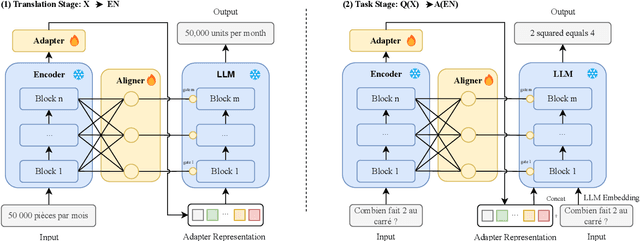
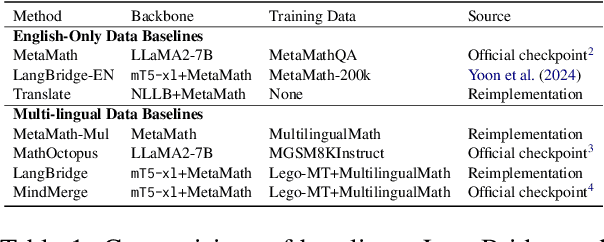
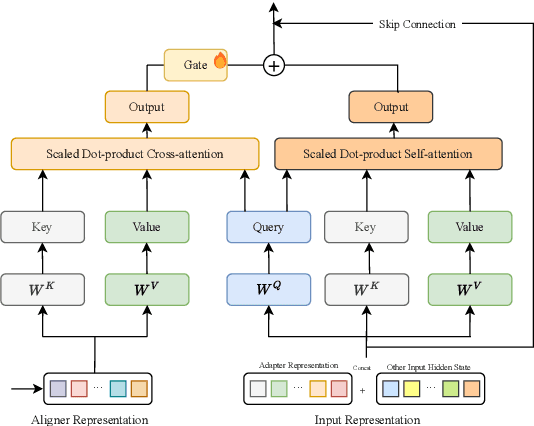
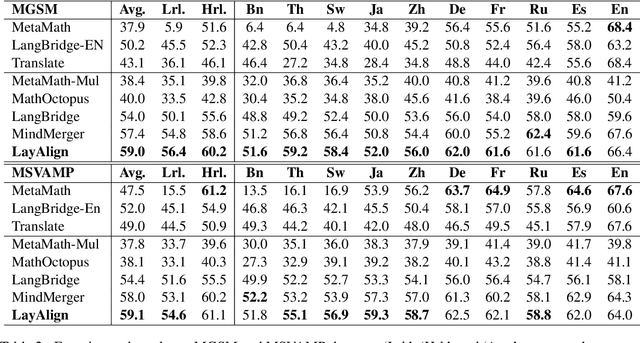
Abstract:Despite being pretrained on multilingual corpora, large language models (LLMs) exhibit suboptimal performance on low-resource languages. Recent approaches have leveraged multilingual encoders alongside LLMs by introducing trainable parameters connecting the two models. However, these methods typically focus on the encoder's output, overlooking valuable information from other layers. We propose \aname (\mname), a framework that integrates representations from all encoder layers, coupled with the \attaname mechanism to enable layer-wise interaction between the LLM and the multilingual encoder. Extensive experiments on multilingual reasoning tasks, along with analyses of learned representations, show that our approach consistently outperforms existing baselines.
SeTAR: Out-of-Distribution Detection with Selective Low-Rank Approximation
Jun 18, 2024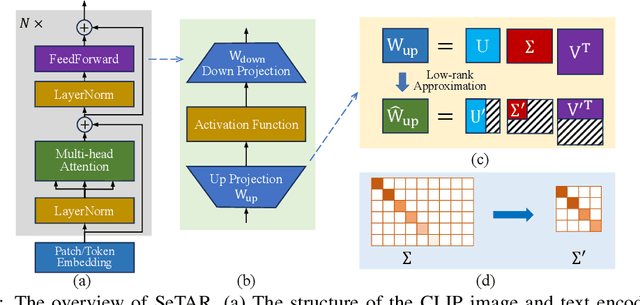
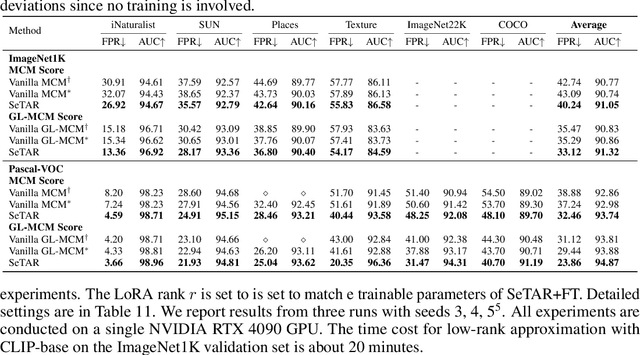
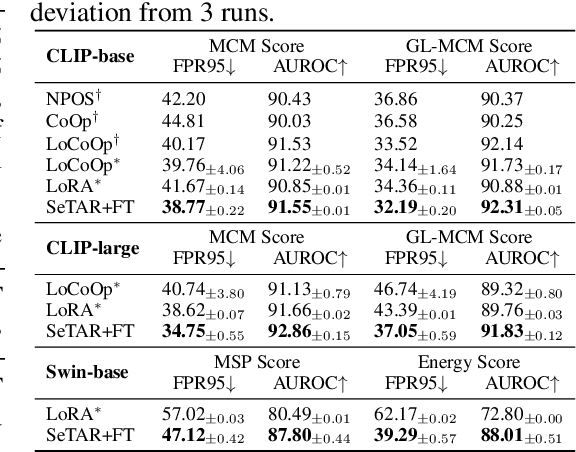
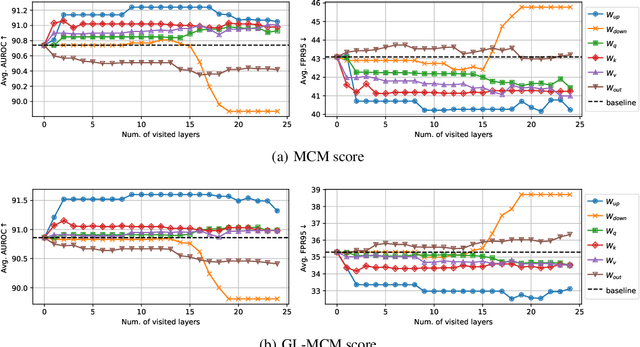
Abstract:Out-of-distribution (OOD) detection is crucial for the safe deployment of neural networks. Existing CLIP-based approaches perform OOD detection by devising novel scoring functions or sophisticated fine-tuning methods. In this work, we propose SeTAR, a novel, training-free OOD detection method that leverages selective low-rank approximation of weight matrices in vision-language and vision-only models. SeTAR enhances OOD detection via post-hoc modification of the model's weight matrices using a simple greedy search algorithm. Based on SeTAR, we further propose SeTAR+FT, a fine-tuning extension optimizing model performance for OOD detection tasks. Extensive evaluations on ImageNet1K and Pascal-VOC benchmarks show SeTAR's superior performance, reducing the false positive rate by up to 18.95% and 36.80% compared to zero-shot and fine-tuning baselines. Ablation studies further validate our approach's effectiveness, robustness, and generalizability across different model backbones. Our work offers a scalable, efficient solution for OOD detection, setting a new state-of-the-art in this area.
MiLoRA: Harnessing Minor Singular Components for Parameter-Efficient LLM Finetuning
Jun 13, 2024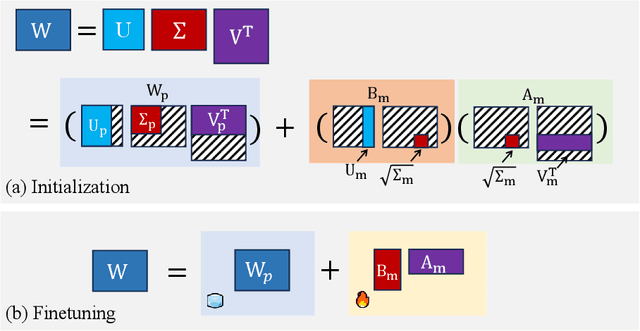

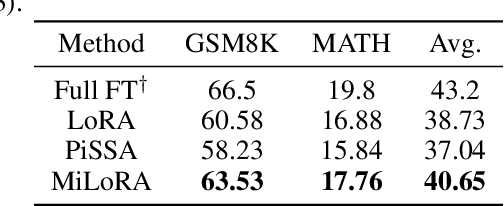
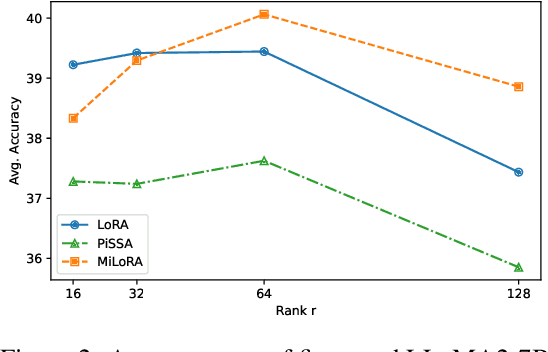
Abstract:Efficient finetuning of large language models (LLMs) aims to adapt the LLMs with reduced computation and memory cost. Previous LoRA-based approaches initialize the low-rank matrices with gaussian distribution and zero values, while keeping the original weight matrices frozen. However, the trainable model parameters optimized in an unguided subspace might have interference with the well-learned subspace of the pretrained weight matrix. In this paper, we propose MiLoRA, a simple yet effective LLM finetuning approach that only updates the minor singular components of the weight matrix while keeping the principle singular components frozen. It is observed that the minor matrix corresponds to the noisy or long-tail information, while the principle matrix contains important knowledge. The MiLoRA initializes the low-rank matrices within a subspace that is orthogonal to the principle matrix, thus the pretrained knowledge is expected to be well preserved. During finetuning, MiLoRA makes the most use of the less-optimized subspace for learning the finetuning dataset. Extensive experiments on commonsense reasoning, math reasoning and instruction following benchmarks present the superior performance of our method.
TADIS: Steering Models for Deep-Thinking about Demonstration Examples
Oct 05, 2023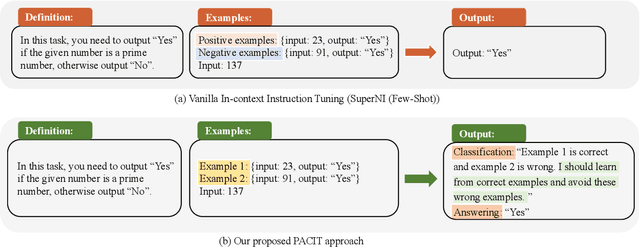



Abstract:Instruction tuning has been demonstrated that could significantly improve the zero-shot generalization capability to unseen tasks by an apparent margin. By incorporating additional context (e.g., task definition, examples) during the fine-tuning process, Large Language Models (LLMs) achieved much higher performance than before. However, recent work reported that delusive task examples can achieve almost the same performance as correct task examples, indicating the input-label correspondence is less important than previously thought. Intrigued by this counter-intuitive observation, we suspect models have the same illusion of competence as humans. Therefore, we propose a novel method called TADIS that steers LLMs for "Deep-Thinking'' about demonstration examples instead of merely seeing. To alleviate the illusion of competence of models, we first ask the model to verify the correctness of shown examples. Then, using the verification results as conditions to elicit models for a better answer. Our experimental results show that TADIS consistently outperforms competitive baselines on in-domain and out-domain tasks (improving 2.79 and 4.03 average ROUGLE-L on out-domain and in-domain datasets, respectively). Despite the presence of generated examples (not all of the thinking labels are accurate), TADIS can notably enhance performance in zero-shot and few-shot settings. This also suggests that our approach can be adopted on a large scale to improve the instruction following capabilities of models without any manual labor. Moreover, we construct three types of thinking labels with different model sizes and find that small models learn from the format of TADIS but larger models can be steered for "Deep-Thinking''.
UniPoll: A Unified Social Media Poll Generation Framework via Multi-Objective Optimization
Jun 12, 2023
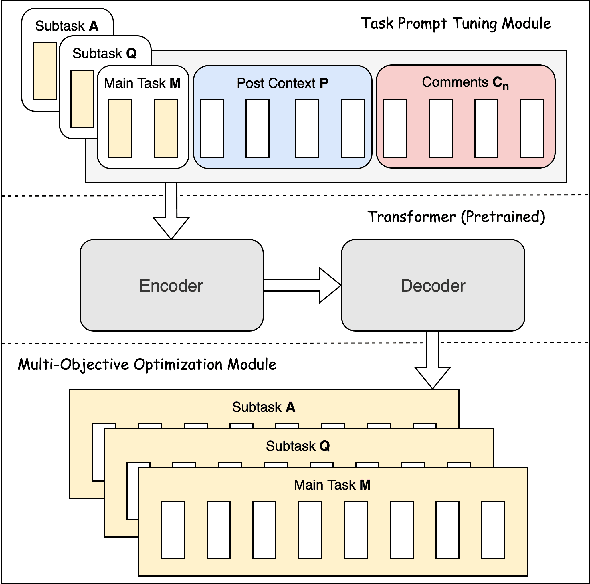
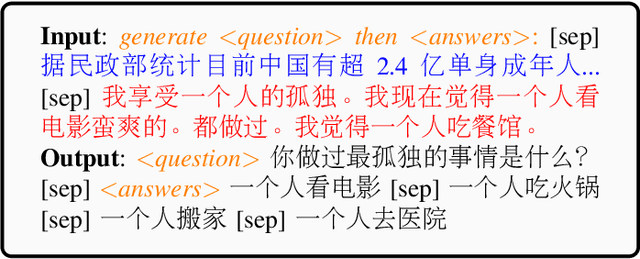

Abstract:Social media platforms are essential outlets for expressing opinions, providing a valuable resource for capturing public viewpoints via text analytics. However, for many users, passive browsing is their preferred mode of interaction, leading to their perspectives being overlooked by text analytics methods. Meanwhile, social media polls have emerged as a practical feature for gathering public opinions, allowing post authors to pose questions with pre-defined answer options for readers to vote on. To broaden the benefits of polls for posts without them, this article explores the automatic generation of a poll from a social media post by leveraging cutting-edge natural language generation (NLG) techniques. However, existing NLG techniques, primarily developed for general-domain texts, may be ineffective when applied to noisy social media data, which often feature implicit context-question-answer relations. To tackle these challenges, we enrich a post context with its comments and propose a novel unified poll generation framework called UniPoll. It employs prompt tuning with multi-objective optimization to bolster the connection exploration between contexts (posts and comments) and polls (questions and answers). Experimental comparisons on a large-scale Chinese Weibo dataset show that UniPoll significantly outperforms T5, the state-of-the-art NLG model, which generates question and answer separately. Comprehensive qualitative and quantitative analyses further underscore the superiority of UniPoll through various evaluation lenses.
 Add to Chrome
Add to Chrome Add to Firefox
Add to Firefox Add to Edge
Add to Edge